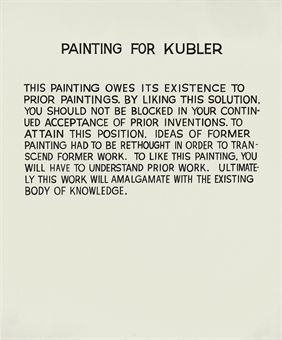 Carol Bove, The Night Sky over New York, October 21, 2007, 9 p.m., 2007.
Carol Bove, The Night Sky over New York, October 21, 2007, 9 p.m., 2007.In it she has mapped out stars exactly where they are on the ceiling in a web with copper bars hanging from each star point. It reminds me of rays of light, as if they are traveling through space from light years away and I can see all of them falling here. This is one of her more aesthetically pleasing pieces as well, which was another reason I liked it. When I first saw it I thought it was some kind of sound art using wind chimes, when I found out it wasn't, it gave me an idea of an installation where the people in the gallery cannot help but occasionally knock a wind chime, thereby creating a sort of organic, accidental music. Although, this may not work because people might try really hard to avoid touching them, or if there are too many, the viewer may be annoyed. Here are a few more of Bove's work that I enjoyed. I like the ones that use a lot of repetition or pattern. Carol Bove, Untitled, 2009
Carol Bove, Untitled, 2009
 Carol Bove, Untitled, 2009
Carol Bove, Untitled, 2009 Carol Bove, Tower of the Prophet, 2002
Carol Bove, Tower of the Prophet, 2002











